
Loki Strategic Cruiser
Defensive Subsystems[]
Loki Defensive - Adaptive Augmenter[]

Adaptive Augmenter
Capitalizing on the exceptional defensive capabilities of fullerene-based components, this subsystem allows a pilot to augment their Loki’s armor resistance, dramatically enhancing its survivability in combat. Tiny molecular-level conduits play a crucial role in orchestrating the flow of nano-assemblers beneath the armor’s surface, guarding the flow of vital repairs against disruptive impact.
| Bonus: 5% bonus to all armor resistances per level | |||||||||||||||||
| Cargo | Shield | Armor | Slots | Sig | Power | ||||||||||||
| 270 | 2200 | 75 % | 50 % | 40 % | 60 % | 1620 | 3300 | 90 % | 10 % | 25 % | 67.5 % | 0 | 1 | 1 | 130 m | 150 | |
Loki Defensive - Adaptive Shielding[]

Adaptive Shielding
Based on the same advanced technology employed by Sleeper drones to harden their armor plating, these tiny nano-assemblers have been reconfigured to improve a shield’s resistance to damage. The influx of superior construction materials and the modularity of Sleeper components have made even this drastic redesign into a fairly simple process.
Loki Defensive - Amplification Node[]

Amplification Node
When confronted with the challenge of adapting Sleeper designs to produce shield boost amplification systems, Sebiestor engineers turned to the defense systems used by certain Talocan structures that had also been found amongst a few ancient ruins. In some rare cases, the shielding systems on Talocan facilities were constructed using a harmony of Sleeper and Talocan designs. The first successful production of a shield boost amplification node drew heavily upon early study of this particular combination.
| Bonus: 5% reduction in signature radius per level | |||||||||||||||||
| Cargo | Shield | Armor | Slots | Sig | |||||||||||||
| 300 | 2500 | 75 % | 50 % | 40 % | 60 % | 1620 | 1650 | 90 % | 10 % | 25 % | 67.5 % | 0 | 1 | 1 | 130 m | ||
Loki Defensive - Warfare Processor[]

Warfare Processor
After countless failed projects over the years, the dream of linking fleets with sub-Battlecruiser hulls was eventually shelved and relegated to the realm of engineering theory. It remained this way for some time, tempting few starship manufacturers to revisit the challenge, even after the discovery of ancient Sleeper designs and the influx of fullerene-based technology. It was not until the first Strategic Cruiser hulls began appearing in small numbers across the empires that they began to truly appreciate the potential Tech III vessels had for modifications.
Not long after, the first warfare processor housing became a reality. Although what it delivered as a standalone unit was undoubtedly impressive, what would count more in time was the way it served as a catalyst. The unit demonstrated to the wider spacefaring industry that the possibilities for Tech III ships were broader than first imagined, and in doing so, it heralded the beginning of even more radical and innovative designs.
Electronic Subsystems[]
Loki Electronics - Dissolution Sequencer[]

Dissolution Sequencer
This subsystems employs a nano-electromechanical dispersion field to strengthen a vessel's sensor systems. Made from billions of advanced molecular-level circuits, the subsystem offers improved protection against hostile ECM.
| Bonus: 15% bonus to ship sensor strength 5% bonus to max targeting range per level | |||||||||
| CPU | Scan | Targeting | Slots | Sensor | |||||
| 335 | 275mm | 60 km | 0 | 3 | 1 | 17 L | |||
Loki Electronics - Immobility Drivers[]
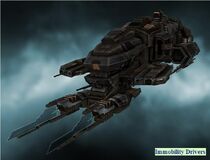
Immobility Drivers
Even millennia old, the technology employed by Sleeper drones is far from lacking. This is particularly true in the field of interdiction technology, where their capabilities often exceed contemporary systems. Consequently, this aspect of their fearsome arsenal has been the focus of much study and in some rare cases, the starting point for scientific breakthroughs. Minmatar researchers studied the long-range webification systems of the Sleeper drones from the moment they were discovered, quickly reverse engineering a subsystem for their Loki that could replicate the Sleeper’s own offensive modules. The end result is a noticeable amplification of a stasis webifier’s effective range.
| Bonus: 30% bonus to stasis webifier range per level | |||||||||
| CPU | Scan | Targeting | Slots | Sensor | |||||
| 320 | 300mm | 50 km | 0 | 3 | 1 | 13 L | |||
Loki Electronics - Tactical Targeting Network[]
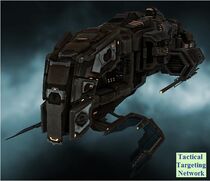
Tactical Targeting Network
Many engineers have attempted to reproduce the precision of the Sleeper drones' weapon systems, but with very few results. The closest reproduction achieved thus far is this targeting network, a complex system of neurovisual interlays, automated trigger response units, and microscanning resolution ordinances. The combination of these processes produces a bonus to scan resolution, easing the targeting of enemies in space, as well as to signature radius, making the ship itself more difficult to target.
| Bonus: 15% bonus to scan resolution per level | |||||||||
| CPU | Scan | Targeting | Slots | Sensor | |||||
| 355 | 260mm | 55 km | 0 | 4 | 0 | 15 L | |||
Loki Electronics - Emergent Locus Analyzer[]
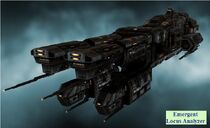
Emergent Locus Analyzer
Emboldened by the development of other, more specialized subsystems, engineers and astrophysicists alike began to investigate modifications to a Strategic Cruiser that could aid their fellow scientists and explorers. The first reverse-engineering projects were predominantly focused on ways to improve a vessel’s astrometrics capabilities. The two-pronged solution of boosting both the strength of the launchers and the probes they deployed proved to be the most popular design in the end. It was not long after the first designs were sold that others took notice and began to reverse-engineer their own. Soon enough, the subsystem was catapulted into mainstream Tech III subsystem manufacture, although perhaps for more than just that one reason.
The first designers of the emergent locus analyzer noted an additional – and entirely unintended – effect in tractor beams. Not only did they reach further, but they would also pull in their cargo more quickly than normal tractor beams. It was an unexpected by-product of the processes that increased scan probe strength, but far from an undesirable one. Although it is not fully clear what part of the construction process enables this additional benefit, so long as the subsystem is built in that exact fashion, it will continue to provide it.
Engineering Subsystems[]
Loki Engineering - Augmented Capacitor Reservoir[]
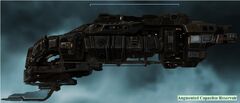
Augmented Capacitor Reservoir
Another example of an old technology re-worked to fit the new Tech III paradigm, augmented capacitor subsystems improve upon the size of a vessel’s capacitor. Designers of Tech III vessels were initially hampered by the problem of how to design a modular ship that could swap out basic engineering upgrades on a per-need basis. This proved particularly true when it came to increasing a vessel’s capacitor size without the use of batteries. In the end, the provision of fullerene-based polymers allowed for solutions that had only existed in theory up until that point.
| Bonus: 5% bonus to capacitor capacity per level | |||||||||
| Power | Capacitor | Slots | Hardpoints | ||||||
| 950 | 1225 | 415 | 1 | 0 | 2 | 1 | 1 | ||
Loki Engineering - Capacitor Regeneration Matrix[]
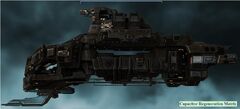
Capacitor Regeneration Matrix
Using the same technology that can be found inside the ancient Sleeper race’s guardian drones, this regeneration matrix greatly improves the recharge rate of a Tech III vessel’s capacitor. Even though empire-based designs have achieved this effect for centuries, the way in which this system works is markedly different.
Rather than the usual tweaking of capacitor fluid formulas, this design simply triples the number of nanotubes inside – something not possible until the recent influx of fullerene polymers from which this subsystem is made. This results in a drastic increase in the speed and efficiency of energy flow throughout a ship. The quicker that the surplus power can be redirected back to the core, the more that it can contribute to the overall recharge rate of the capacitor.
| Bonus: 5% reduction in capacitor recharge rate per level | |||||||||
| Power | Capacitor | Slots | Hardpoints | ||||||
| 750 | 2100 | 415 | 0 | 1 | 2 | 0 | 0 | ||
Loki Engineering - Power Core Multiplier[]

Power Core Multiplier
Comprised of countless nanomachines that enhance the energy flow from a ship’s reactor core, this engineering subsystem offers a pilot the option of increasing the power grid of their vessel. Although the empires mastered energy grid upgrades many centuries ago, the adaptation of old designs to the new Tech III paradigm has been a more recent breakthrough.
| Bonus: 5% bonus to power output per level | |||||||||
| Power | Capacitor | Slots | Hardpoints | ||||||
| 1050 | 1225 | 415 | 1 | 0 | 2 | 1 | 1 | ||
Loki Engineering - Supplemental Coolant Injector[]
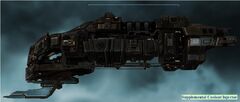
Supplemental Coolant Injector
When it came to overheating modules on Tech III vessels, the spaceship engineering industry always knew, or at the very least suspected, that a larger breakthrough was on its way. Those first small advances made by reverse-engineering ancient Sleeper hulls were seen by many as simply the beginning of something greater. For these and other reasons, few were surprised by the introduction of a subsystem focused purely on pushing the “heat” envelope.
Various designs surfaced in the weeks and months following the opening of the new wormholes, each offering increasingly smaller improvements on the last. Research seemed to stagnate for a while and it was not until the idea of additional, localized coolant injectors became widespread that heat-focused subsystems truly began to perform in a class of their own. The current iterations offer pilots truly unprecedented abilities when it comes to overheating and pushing modules to their limits. Military experts and even capsuleers alike have been left wondering just how drastically this new design, along with so many other radical new entries to the subsystems field, will reshape interstellar warfare.
| Bonus: 5% Reduction in the amount of heat damage absorbed by modules per level | |||||||||
| Power | Capacitor | Slots | Hardpoints | ||||||
| 950 | 1225 | 415 | 0 | 1 | 2 | 0 | 0 | ||
Offensive Subsystems[]
Loki Offensive - Hardpoint Efficiency Configuration[]

Hardpoint Efficiency Configuration
Adaptation and innovation go hand-in-hand, and this subsystem is a prime example of both ideas. While researching Sleeper drone weapon systems, a group of Minmatar engineers discovered special similarities to the technology behind all Sleeper weapon types. Distilling the underlying mechanic to its essence produced this hardpoint configuration, which enabled projectile weapons and missile launchers to share power sources and energy supplies (most of which were advanced beyond modern standards). This offers a vast increase to the rate of fire of both weapon types. Attempts to merge this technology to other weapon groups have, as yet, proven unsuccessful.
| Bonus: 7.5% bonus to medium projectile turret rate of fire per level 7.5% bonus to missile launcher rate of fire per level | |||||||||
| Slots | Hardpoints | Drones | CPU | ||||||
| 5 | 0 | 1 | 3 | 3 | 80 m3 | 40 Mbit | 50 | ||
Loki Offensive - Projectile Scoping Array[]

Projectile Scoping Array
Scoping arrays were mostly out of fashion in recent ship design, but Sleeper technology has brought them somewhat back into vogue. Based upon the remarkable flexibility fullerene-based technology, Sleeper-based scoping arrays allowed projectile weaponry to produce longer-ranged accuracy without reducing the weapon's rate-of-fire. While a resurgence of scoping arrays is not expected, this subsystem certainly shows its uses in modern warfare.
| Bonus: 7.5% bonus to medium projectile turret rate of fire per level 10% bonus to medium projectile falloff per level. | |||||||||
| Slots | Hardpoints | Drones | |||||||
| 5 | 0 | 1 | 0 | 5 | 50 m3 | 25 Mbit | |||
Loki Offensive - Turret Concurrence Registry[]

Turret Concurrence Registry
Increasing the tracking capabilities of projectile weaponry has never been an easy task, yet the introduction of Sleeper technology has made this job more achievable. This registry is based on the idea of concurrence, where firing mechanisms can recycle energy among multiple turret emissions. This recycled energy is not only sustainable, but more powerful as well, a marvel considering its normal power output relative to other turret systems. Projectile turrets can be modified to use this surplus power to not only augment projectile damage output, but also to make minute adjustments on the fly, offering increasing tracking speed and optimal range.
Loki Offensive - Covert Reconfiguration[]

Covert Reconfiguration
From the moment Strategic Cruisers became a reality, there were whispers amongst the scientific community about the potential for advances in cloaking technology. They remained that alone for the longest time, with few involved in the reverse engineering process willing to share any news of their discoveries. Everyone knew that, should the technology ever become a reality, the capabilities of the new Strategic Cruisers would change overnight.
The Loki’s Covert Reconfiguration designs arose out of a collective will to respond to what was thought to be Amarrian aggression deep inside their home regions. Unlike many scientific and technological breakthroughs, it was not the Sebiestor tribe alone who ushered in the paradigm shift to covert-capable Strategic Cruisers. It was only through consultation and collaboration with many other tribes and sub-factions that something substantial began to take shape.
The Krusual and Thukker are said to have played the most important roles, however, in realizing the final design; the Thukker by providing the cloaking technology, and the Krusual by convincing them to do so. How they achieved this, or what they may have promised remains a secret; the two tribes are notorious for having many, and keeping them all.
| Bonus: 7.5% bonus to medium projectile turret rate of fire per level Role Bonus: 100% reduction in Cloaking Device CPU use | |||||||||
| Slots | Hardpoints | Drones | |||||||
| 5 | 0 | 1 | 0 | 4 | 0 m3 | 0 Mbit | |||
Propulsion Subsystems[]
Loki Propulsion - Chassis Optimization[]
This subsystem exploits the latest technological advances afforded by discovery of the ancient Sleeper race’s own designs. Optimizations made to the chassis allow for vast improvements to be made to a Loki’s base velocity. Although the various layout optimizations sacrifice other options for propulsion customization, the flow-on effects from an increase in base velocity make it an attractive upgrade for those whose Tech III vessels are in need of an overall speed increase.

|

|
| Bonus: 5% bonus to max velocity per level | |||||||
| Velocity | Inertia | Slots | |||||
| 180 | .612 | 0 | 1 | ||||
Loki Propulsion - Fuel Catalyst[]
The ancient Sleeper race was known to have mastered various sustainable energy technologies including thermoelectric systems, which they usually built directly into a vessel’s hull. Capsuleer reverse-engineers took little time to adapt salvaged versions of these Sleeper energy systems into their own modular Tech III vessel pieces.
Thanks to widespread demand in many Minmatar industries, fuel catalyst systems were one of the first to be developed. Making full use of locally generated thermoelectric power, they are able to partially meet the fuel needs of an afterburner. This process makes it possible to inject fuel in larger amounts for the same capacitor cost, offering pilots a significant boost to the velocity increase from afterburners.

|

|
| Bonus: 10% bonus to afterburner speed per level | |||||||
| Velocity | Inertia | Slots | |||||
| 180 | .500 | 0 | 1 | ||||
Loki Propulsion - Intercalated Nanofibers[]
Constructed from hard yet lightweight fullerene polymers, these intercalated fibers boost the agility of a starship without compromising its structural resilience. Even though basic nanofibers have existed for hundreds of years, the integration of various Sleeper-based salvage and other polymers takes the technology to a completely new level of modularity. This has allowed the same centuries-old technology to be ported over to the new Tech III paradigm.

|

|
| Bonus: 5% increased agility per level | |||||||
| Velocity | Inertia | Slots | |||||
| 175 | .556 | 0 | 1 | ||||
Loki Propulsion - Interdiction Nullifier[]
Dubbed the “interdiction nullifier” by the Guristas, who suffered its first introduction on the battlefield, this subsystem grants a startling and unprecedented capability; an immunity to non-targeted interdiction such as mobile warp disruptors and interdiction spheres.
The origins of the first “nullifier” designs are shrouded in mystery, but the subsystem’s initial production of is thought to have taken place soon after the wormhole openings, and well before the technology became widespread knowledge. Not long after the first Tengu were designed, the Caldari Navy intercepted emergency transmissions from Guristas fleets across Venal, Tenal and Vale of the Silent. All of the reports made mention of Loki-class vessels slipping past defensive deployments and into core Guristas territory despite all efforts to stop the ships or slow them down.
Following these reports, rumors spread that other groups began to discover and implement this extraordinary new technology, and yet of all the factions that leapt upon the opportunity, none were so eager or ruthless in their own race to capitalize as the independent capsuleer and pirate organizations that make the nullsec frontiers their home.

|

|
| Bonus: 5% increased agility per level Role Bonus: Immunity to non-targeted interdiction | |||||||
| Velocity | Inertia | Slots | |||||
| 165 | .723 | 0 | 0 | ||||